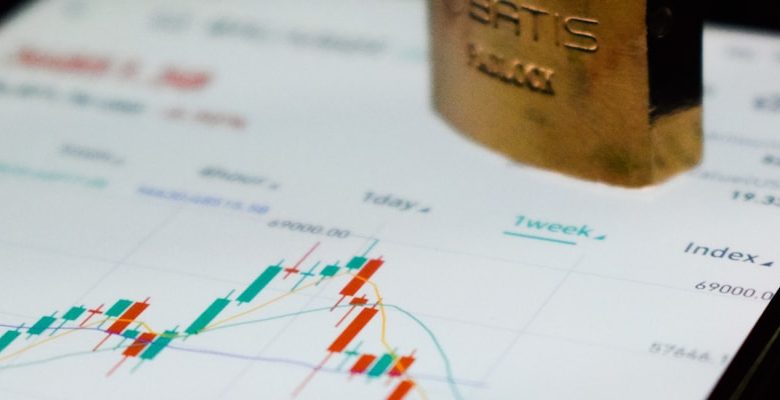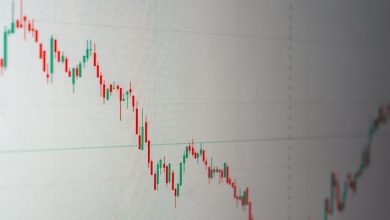Understanding Technical Analysis for Crypto Trading

- Introduction to Technical Analysis in Crypto Trading
- Key Concepts and Terminologies in Technical Analysis
- The Role of Charts and Patterns in Crypto Trading
- Understanding Indicators and Oscillators for Trading Signals
- Implementing Technical Analysis Strategies in Crypto Markets
- Common Mistakes to Avoid When Using Technical Analysis in Crypto Trading
Introduction to Technical Analysis in Crypto Trading
When it comes to crypto trading, understanding technical analysis is crucial for making informed decisions. Technical analysis involves studying historical price data to predict future price movements. By analyzing charts and patterns, traders can gain insights into market trends and make better trading decisions.
Technical analysis in crypto trading involves using various tools and indicators to analyze price movements. Some common tools used in technical analysis include moving averages, support and resistance levels, and trend lines. By using these tools, traders can identify potential entry and exit points for their trades.
One of the key benefits of technical analysis is that it can help traders identify trends and patterns that may not be apparent from fundamental analysis alone. By studying price movements, traders can better understand market sentiment and make more informed decisions.
Overall, technical analysis is an essential tool for crypto traders looking to improve their trading strategies. By understanding how to analyze price data and identify trends, traders can increase their chances of success in the volatile world of crypto trading.
Key Concepts and Terminologies in Technical Analysis
Technical analysis is a crucial aspect of crypto trading, as it involves studying historical price data to forecast future price movements. To fully comprehend technical analysis, it is essential to grasp key concepts and terminologies commonly used in this field.
One fundamental concept is support and resistance levels, which are price points where a particular crypto asset tends to stop falling or rising. Traders use these levels to make informed decisions on when to buy or sell an asset. Another important term is trend lines, which are lines drawn on a price chart to indicate the direction of the asset’s price movement.
Moving averages are another key concept in technical analysis, representing the average price of an asset over a specific period. Traders often use moving averages to identify trends and potential entry or exit points. Additionally, indicators such as the Relative Strength Index (RSI) and Moving Average Convergence Divergence (MACD) are tools used to analyze price movements and identify potential trading opportunities.
Understanding these key concepts and terminologies is essential for crypto traders looking to make informed decisions in the volatile cryptocurrency market. By incorporating technical analysis into their trading strategies, traders can gain valuable insights into market trends and price movements, ultimately improving their chances of success.
The Role of Charts and Patterns in Crypto Trading
Charts and patterns play a crucial role in crypto trading as they provide valuable insights into the market trends and help traders make informed decisions. By analyzing historical price data, traders can identify patterns that indicate potential future price movements. These patterns can range from simple formations like triangles and rectangles to more complex patterns such as head and shoulders or cup and handle.
Understanding these patterns can give traders a competitive edge in the market, allowing them to anticipate price movements and adjust their trading strategies accordingly. For example, a bullish pattern like an ascending triangle may signal an upcoming price breakout, while a bearish pattern like a head and shoulders formation could indicate a potential trend reversal.
Traders often use technical indicators in conjunction with charts and patterns to confirm their trading signals. These indicators, such as moving averages, RSI, and MACD, provide additional information about the market conditions and help traders validate their analysis. By combining chart patterns with technical indicators, traders can increase their chances of making successful trades.
Understanding Indicators and Oscillators for Trading Signals
Indicators and oscillators are essential tools for analyzing price movements and predicting potential trends in the crypto market. By understanding how these technical tools work, traders can make more informed decisions when buying and selling cryptocurrencies.
Indicators are mathematical calculations based on the price, volume, or open interest of a security. They help traders identify trends, reversals, and potential entry or exit points in the market. Oscillators, on the other hand, are technical indicators that fluctuate between two values, typically overbought and oversold levels. They can help traders determine when a market is potentially overbought or oversold, indicating a possible reversal in the price.
Common indicators and oscillators used in crypto trading include Moving Averages, Relative Strength Index (RSI), Moving Average Convergence Divergence (MACD), and Stochastic Oscillator. Each of these tools provides valuable insights into the market dynamics and can help traders anticipate price movements.
When using indicators and oscillators for trading signals, it is essential to consider multiple factors and not rely solely on one tool. Traders should look for confluence between different indicators to confirm a trading signal and reduce the risk of false alarms. Additionally, it is crucial to backtest trading strategies using historical data to ensure their effectiveness in different market conditions.
Implementing Technical Analysis Strategies in Crypto Markets
When it comes to implementing technical analysis strategies in crypto markets, traders need to be aware of the unique characteristics of these digital assets. Unlike traditional markets, cryptocurrencies are known for their high volatility and 24/7 trading hours. This means that technical analysis tools and indicators may behave differently in the crypto space compared to stocks or forex.
One key aspect of technical analysis in crypto trading is identifying trends. Traders can use tools such as moving averages, trendlines, and chart patterns to spot potential trends in the price movements of cryptocurrencies. By analyzing these trends, traders can make informed decisions on when to enter or exit a trade.
Another important strategy in technical analysis for crypto trading is using support and resistance levels. These levels are price points where a cryptocurrency’s price tends to bounce off or reverse. By identifying these levels, traders can set stop-loss orders to manage their risk and take profit targets to capitalize on price movements.
Additionally, traders can use momentum indicators such as the Relative Strength Index (RSI) or the Moving Average Convergence Divergence (MACD) to gauge the strength of price movements in cryptocurrencies. These indicators can help traders confirm trends, spot potential reversals, and make better trading decisions.
Overall, implementing technical analysis strategies in crypto markets requires traders to adapt traditional tools and indicators to the unique characteristics of cryptocurrencies. By understanding these differences and using the right tools effectively, traders can improve their chances of success in the highly volatile world of crypto trading.
Common Mistakes to Avoid When Using Technical Analysis in Crypto Trading
When utilizing technical analysis for crypto trading, there are several common mistakes that traders should avoid in order to make informed decisions and maximize profits. Here are some key errors to steer clear of:
- Overreliance on a single indicator: Relying too heavily on just one technical indicator can lead to inaccurate conclusions and poor trading decisions. It is important to use a combination of indicators to get a more comprehensive view of the market.
- Ignoring risk management: Failing to implement proper risk management strategies can result in significant losses. Traders should always set stop-loss orders and adhere to risk-reward ratios to protect their capital.
- Chasing trends: Jumping on the bandwagon of a popular trend without conducting thorough analysis can be risky. It is essential to verify the validity of a trend through technical analysis before entering a trade.
- Emotional trading: Allowing emotions to dictate trading decisions can cloud judgment and lead to impulsive actions. Traders should remain disciplined and stick to their predetermined strategies.
- Not considering the bigger picture: Focusing solely on short-term charts and neglecting long-term trends can result in missed opportunities. It is crucial to analyze multiple timeframes to gain a comprehensive understanding of the market.



